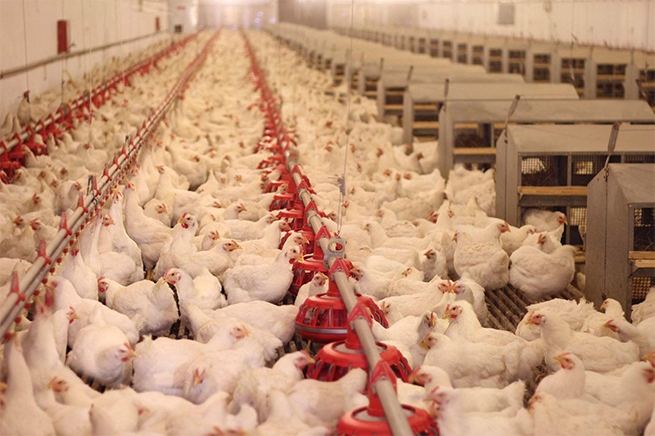In today's fast-paced industrial and agricultural environments, accuracy and efficiency are not just goals; they are necessities. One of the key technologies enabling these advancements is the automatic weighing instrument. Here at SWT Tech, where we develop intelligent solutions for various sectors, we see the profound impact these instruments have on streamlining operations and providing critical data.
But what exactly sets an "automatic" weighing instrument apart from its manual counterpart? And how can they transform your processes? Let's weigh in on this essential technology.
An automatic weighing instrument (AWI) is a device that determines the mass of an object or material without the need for direct human intervention for each individual weighing operation. Once set up and programmed, it performs the weighing cycle repeatedly and automatically.
This contrasts with non-automatic weighing instruments (NAWIs), like a typical bench scale, where an operator manually places the item, waits for a reading, and then removes it. AWIs are designed for integration into production lines, packaging processes, bulk material handling, and continuous flow applications. The "automatic" aspect often involves:
Automated material feeding.
Automatic initiation of the weighing cycle.
Automatic recording or transmission of weight data.
Often, automatic actions are based on the weight (e.g., rejecting an out-of-spec product, controlling a filling process).

While designs vary greatly depending on the specific application, most automatic weighing instruments share a few fundamental components:
Load Cell(s): The heart of any electronic weighing instrument. As we've discussed in other posts, these transducers convert the force of the weight into a measurable electrical signal. The number and type of load cells for weighing depend on the capacity and design of the AWI.
Weighing Mechanism/Platform: This is the structure that supports the item or material being weighed and transfers the force to the load cell(s). It could be a conveyor belt section, a hopper, a platform, or a specialized fixture.
Material Handling System (if applicable): For many AWIs, this includes conveyors, feeders (vibratory, screw, belt), gates, or diverters that automatically move the product or material onto and off the weighing mechanism.
Control Unit/Indicator: This is the brain of the AWI. It receives the signal from the load cell(s), processes it, displays the weight, and manages the automatic functions. It often includes a microprocessor, memory, and a user interface (e.g., touchscreen, keypad).
Data Output & Connectivity: Modern AWIs are designed to communicate. They can output weight data to printers, computers, Programmable Logic Controllers (PLCs), Manufacturing Execution Systems (MES), or cloud platforms like those we integrate with at SWT Tech for advanced analytics and remote monitoring.
Automatic weighing instruments come in many forms, each tailored for specific tasks. Here are a few common examples:
Checkweighers: Used in production lines to verify the weight of packaged goods, ensuring they are within pre-set tolerances. Underweight or overweight items can be automatically rejected.
Belt Weighers (Conveyor Scales): Measure the flow rate and total weight of bulk materials moving on a conveyor belt, common in mining, aggregates, and agriculture.
Hopper/Tank/Silo Scales: These automatically weigh materials in hoppers, tanks, or silos. SWT Tech's intelligent silo weighing systems are a prime example, providing continuous, automatic inventory monitoring of feed or other bulk materials.
Automatic Batching Systems: Precisely weigh and dispense multiple ingredients according to a pre-programmed recipe, common in food processing, concrete production, and chemical industries.
Filling Machines (Fill-by-Weight): Automatically fill containers (bags, bottles, drums) to a target weight.
In-Motion Scales: Weigh objects (like packages or even vehicles) as they move across a scale platform without stopping.
Integrating automatic weighing instruments into your operations can unlock a host of significant benefits:
Increased Speed & Throughput: AWIs can perform weighing operations much faster than manual methods, significantly boosting production line speed.
Improved Accuracy & Consistency: Reduces human error associated with manual weighing, leading to more consistent product quality and less giveaway.
Reduced Labor Costs: Frees up personnel from repetitive manual weighing tasks, allowing them to focus on more value-added activities.
Enhanced Data Collection & Traceability: Automatic logging of weight data provides valuable records for quality control, inventory management, and regulatory compliance.
Better Process Control: Real-time weight data can be used to monitor and adjust upstream or downstream processes, optimizing material usage and product consistency.
Reduced Product Giveaway/Waste: Ensures products meet weight specifications, minimizing costly overfilling or underfilling.
Improved Safety: Can reduce manual handling of heavy or hazardous materials.
If your operations involve repetitive weighing, high throughput requirements, a need for consistent accuracy, or the desire for better data integration, then an automatic weighing instrument is likely a very smart investment.
The key is to choose an instrument that is well-suited to your specific material, application, environment, and accuracy requirements. At SWT technologies, we understand the power of precise, automated measurement. Whether it's for intelligent agricultural systems or industrial process control, AWIs are fundamental to modern, efficient operations. Considering how automatic weighing could benefit your business? Our team at SWT Tech can help you explore the best solutions to meet your specific needs for smart, reliable measurement.
1-437-268-7072